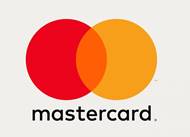SBI Card Pay is now available on the Mastercard platform. This is a payment feature based on Host Card Emulation (HCE) technology, which allows customers to create a virtual version of their physical SBI Credit Card on their mobile phones and then tap their phone at Near-Field-Communication (NFC) enabled Point of Sale terminals (POS) to make payments.
To make use of this service, customers with an Android smartphone (housing Android OS KitKat version 4.4 and above) have to register their SBI Credit Card on the SBI Card mobile application. This creates a virtual card on their mobile phone for their physical credit card. Thereafter, customers can make payments at merchants simply by unlocking their mobile phone screen using fingerprints, the screen lock facility or an MPIN and tapping the phone at a Near-Field-Communication (NFC) POS. This simple ‘tap and pay’ contactless process makes the card payments swifter, hygienic and more seamless for customers.
This is a strategic partnership keeping in mind the increase in digital payments during the pandemic. Mastercard Digital Enablement Service (MDES) will allow payment credentials to be securely tokenised and stored in mobile devices. Mastercard is constantly enabling different form factors for consumers to choose from. SBI Card Pay is powered by Comviva’s HCE Module from its mobiquity Banking Suite, that leverages Host Card Emulation (HCE) technology and tokenisation to deliver swift, seamless, secure and convenient contactless mobile payments to customers.
 Tokenisation converts a customer’s card information into a device-specific digital token. Hence, while executing a transaction, a digital token is shared and the customer’s actual card information is masked, thus securing the transaction. In case the customer’s mobile device is misplaced, details of the card remain secure, as it is stored as digital tokens.
Tokenisation converts a customer’s card information into a device-specific digital token. Hence, while executing a transaction, a digital token is shared and the customer’s actual card information is masked, thus securing the transaction. In case the customer’s mobile device is misplaced, details of the card remain secure, as it is stored as digital tokens.
In 2020, SBI Card Pay received many regional and international awards, including PayTech Award, Payments & Cards Award and InnTech Award, for ease-of-use, hygiene and security it offers to customers during the payment at merchants’ POS.
Rama Mohan Rao Amara, MD & CEO of SBI Card says, “SBI Card Pay has redefined the payment experience for our customers. The ’Tap and Pay’ contactless experience is not just fast, secure and convenient, but also very relevant in Covid era from a safety perspective as customers simply need to tap their mobile phone on NFC enabled POS terminals to make payments. We are happy to extend SBI Card Pay feature on Mastercard platform too. We believe that contactless payments will continue to play a key role in country’s digital payments drive and as the supporting infrastructure increases countrywide, adoption is bound to accelerate significantly.”
 Commenting on the launch, Vikas Varma, chief operating officer, South Asia, Mastercard comments, “Safety and security combined with quick and convenient payment experience, is at the core of growing India’s digital economy. Mastercard is happy to partner with SBI Card and Comviva to bring the benefits of ‘Tap and Pay’ contactless payments to Indian consumers.”
Commenting on the launch, Vikas Varma, chief operating officer, South Asia, Mastercard comments, “Safety and security combined with quick and convenient payment experience, is at the core of growing India’s digital economy. Mastercard is happy to partner with SBI Card and Comviva to bring the benefits of ‘Tap and Pay’ contactless payments to Indian consumers.”
“These ‘tap and pay’ payments are secure, seamless, and more importantly are safe in time of COVID-19 pandemic. Mastercard is confident that the service will offer a better mobile payment experience for SBI Card cardholders. It will also encourage contactless payments, especially in a time when people prefer touch-free transactions in a safe and secure manner. With this new launch, Mastercard is strengthening the long-standing partnership with India’s largest pure play credit card issuer.”
 Srinivas Nidugondi, COO and EVP for digital financial solutions at Comviva adds, “Globally HCE and tokenisation are making card payments frictionless and secure, and we believe that in India also they will redefine the card payment experience and bring it on par with the developed world. With the growing NFC POS infrastructure in India and mobile phones becoming de facto wallets for consumers, we expect ‘tap and pay’ services like SBI Card Pay are the future of card payments in India. The inclusion of SBI Cards on Mastercard platform will help to grow the usage of this service in the country.”
Srinivas Nidugondi, COO and EVP for digital financial solutions at Comviva adds, “Globally HCE and tokenisation are making card payments frictionless and secure, and we believe that in India also they will redefine the card payment experience and bring it on par with the developed world. With the growing NFC POS infrastructure in India and mobile phones becoming de facto wallets for consumers, we expect ‘tap and pay’ services like SBI Card Pay are the future of card payments in India. The inclusion of SBI Cards on Mastercard platform will help to grow the usage of this service in the country.”
Comviva’s mobiquity Banking suite provides a comprehensive solution to banks and financial institutions, to not only build, manage and control the omni-channel experiences, but also continuously iterate and engage the consumers, through instant configuration capability, marketing automation, personalisation, and experimentation engine. This empowers the bank to deliver a hyper-personalised experience, thereby enhancing the customer’s value, and subsequently, profitably transition to the digital age.
Moreover, the product also delivers agile and secure contactless payment experience to the customer, by leveraging HCE and Tokenisation. HCE enables the customer to have a digital version of the credit or debit card in their mobile phone and use it at payWave/payPass certified POS machines. This eliminates the requirement of a physical card.
Tokenisation ensures that payments are executed in a secure manner, as details of the card are not shared with the merchant, while the transaction is being processed. mobiquity is a multi-token service provider (TSP) solution, which is readily integrated and certified for use with Mastercard’s MDES solutions. It provides support for any other TSP as well, using a single proprietary SDK, across devices.
Comment on this article below or via Twitter: @VanillaPlus OR @jcvplus






